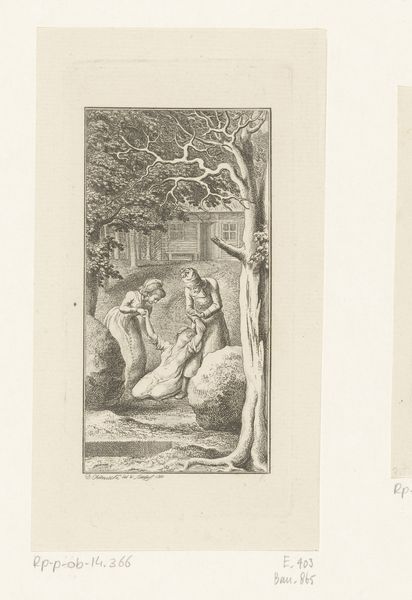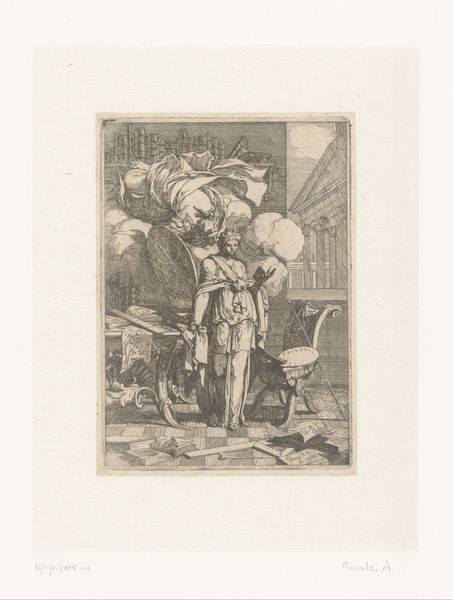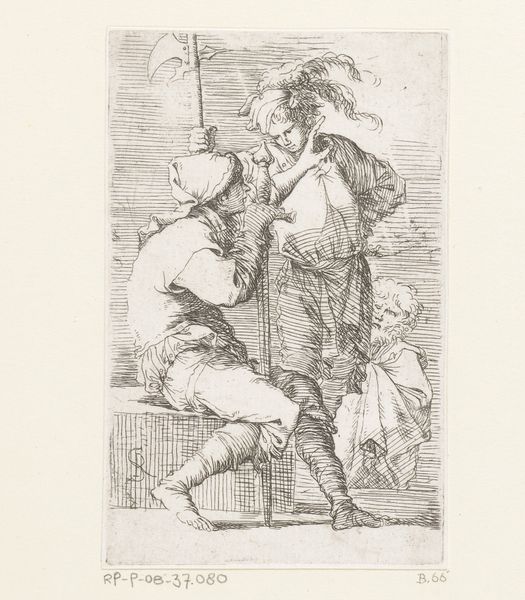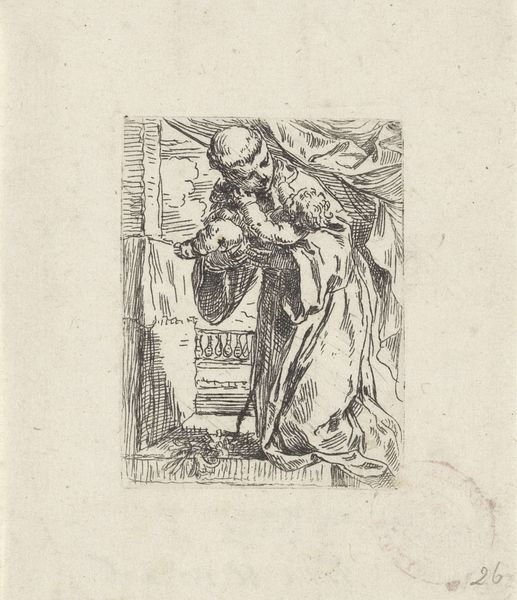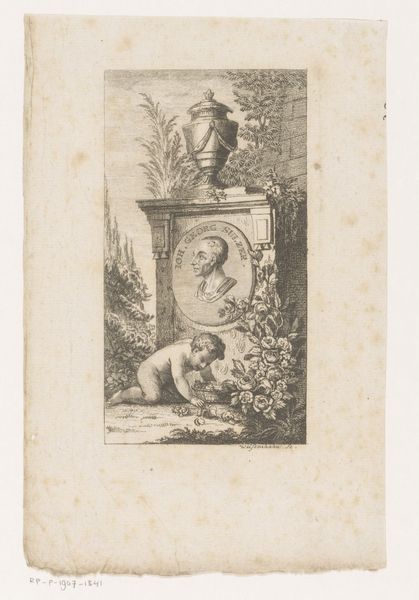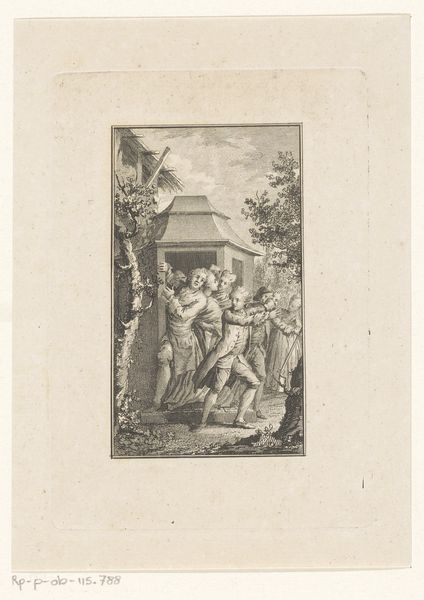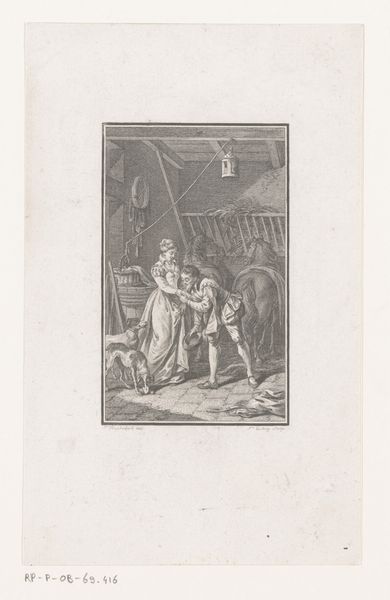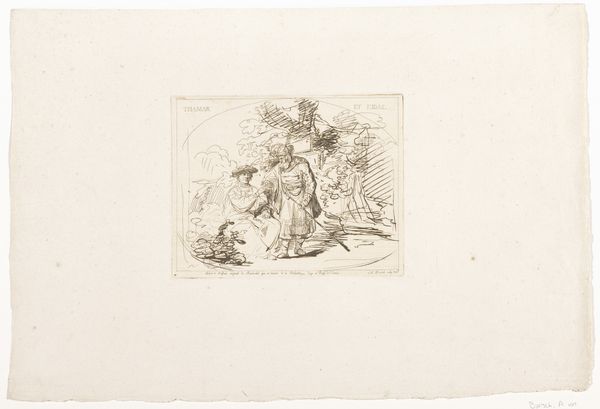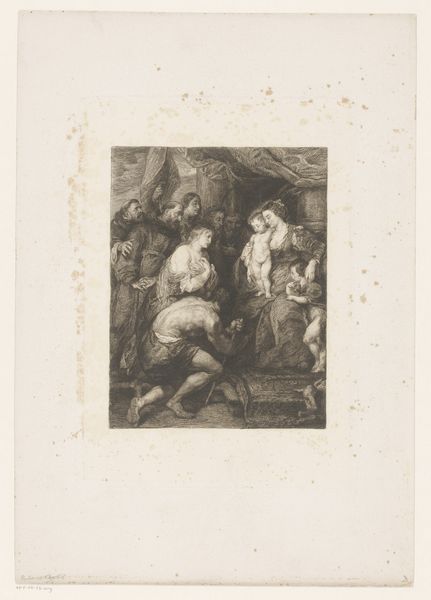
engraving
#
portrait
#
allegory
#
baroque
#
figuration
#
line
#
history-painting
#
engraving
Dimensions: height 160 mm, width 112 mm
Copyright: Rijks Museum: Open Domain
Editor: So, this engraving, "The Muse of Painting Working at an Easel" by Antoine Rivalz, likely created between 1695 and 1699, has a sort of dreamlike quality, almost theatrical. What is your initial impression of the work? Curator: Formally, I'm drawn to the contrasting textures and densities created by the varying linework. Notice how the intricate hatching defines the drapery and foliage, versus the smooth, open areas of the canvas and sky. Editor: Yes, the canvas really stands out. And, well, what about what's *on* the canvas, or rather, not on the canvas? Curator: Precisely. The blank canvas is as important as the surrounding imagery. Its emptiness is a void. Look at the linear structure: the angles of the easel. Rivalz draws the eye. Is the emptiness a symbol? Is this a meditation on creative potential, perhaps? Editor: Hmm, interesting point. What about the muse herself? She is surrounded by lush vegetation and a baroque sculpture, is it important to the composition? Curator: Consider how her form is delineated versus that statue to the right, with both being sources of classical association. What sort of dynamic do you detect? Editor: It looks like the artist focuses on contrasting and superimposing geometric and curvilinear forms with very interesting surface handling of form. That is very appealing and suggestive. I can imagine the painting, somehow. Thanks for your point of view. Curator: And I am fascinated by your sensitivity to the tactile nature of the scene's rendering, where linear elements interact with such clarity, so powerfully.
Comments
No comments
Be the first to comment and join the conversation on the ultimate creative platform.
